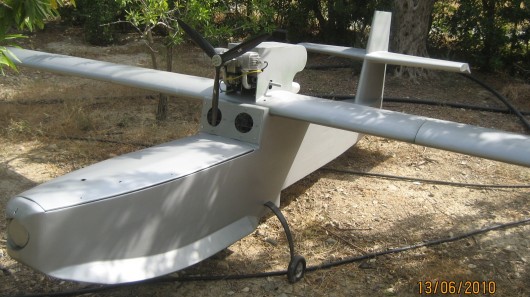 |
People often need to be rescued at sea because of stormy weather – exactly the kind of conditions in which it is not safe to fly. Nonetheless, fully-crewed helicopters and fixed-wing aircraft are regularly sent out into such weather to perform maritime rescues, endangering both the crew and the expensive aircraft themselves. Soon, however, a new type of unmanned remote-control aircraft may be able to do the job. |
 |
People often need to be rescued at sea because of stormy weather – exactly the kind of conditions in which it is not safe to fly. Nonetheless, fully-crewed helicopters and fixed-wing aircraft are regularly sent out into such weather to perform maritime rescues, endangering both the crew and the expensive aircraft themselves. Soon, however, a new type of unmanned remote-control aircraft may be able to do the job. Not only would flight crews be kept out of harm’s way, but as demonstrated by a functioning prototype, the aircraft would outperform conventional planes in rough weather, thanks to shape-shifting technology. |
|
The maritime rescue UAV (unmanned aerial vehicle) is being developed through the EUREKA E! 3931 ASARP project, The prototype seaplane can take off or land on ground or water, fly for up to 4.5 hours, and has a payload capacity of 40 kg. (88 lbs.). It also has onboard cameras which transmit live to its self-sufficient ground command center, where a human operator mans the controls. Presumably it can’t pluck people out of the sea, but it could establish their location and perhaps drop supplies. The little airplane is able to withstand rough conditions thanks to three aeroservoelastic trim tabs, which are located on the trailing edges of the wings and tail. When the plane is hit by wind gusts, the tabs perform rapid high-frequency shape changes, to counteract the effects of the wind. The technology is not unlike the shape-changing trailing edge flaps currently being developed to protect wind turbines from destructive gusts. Combined with several other features, such as a special aerofoil profile optimized for high lift at low speeds, the result is a remarkably steady aircraft. The project is being coordinated by GGD Engineering of Scotland, with the tabs being developed by the Computational Fluid Dynamics Centre in |

 Previous page
Previous page Back to top
Back to top







